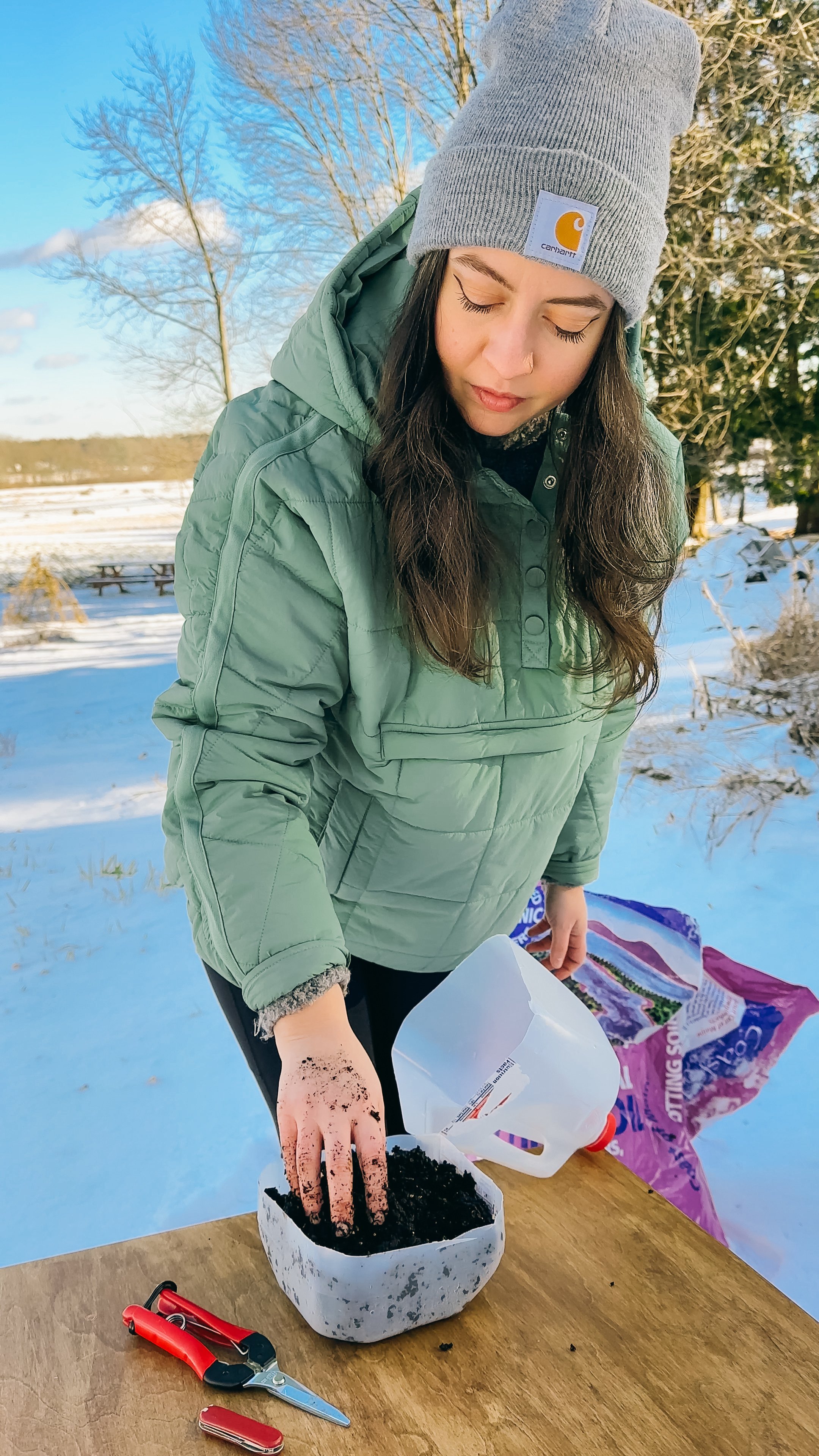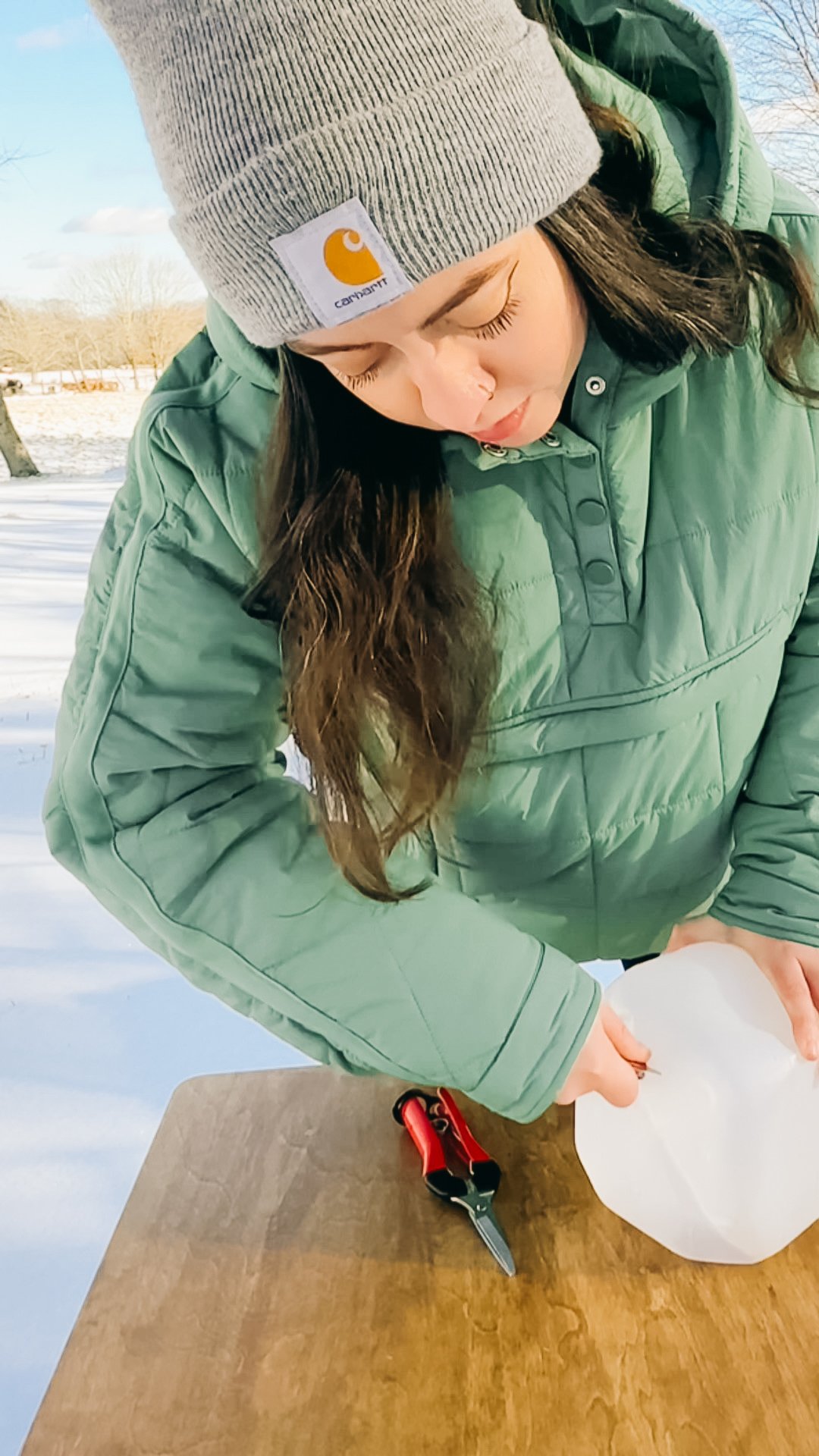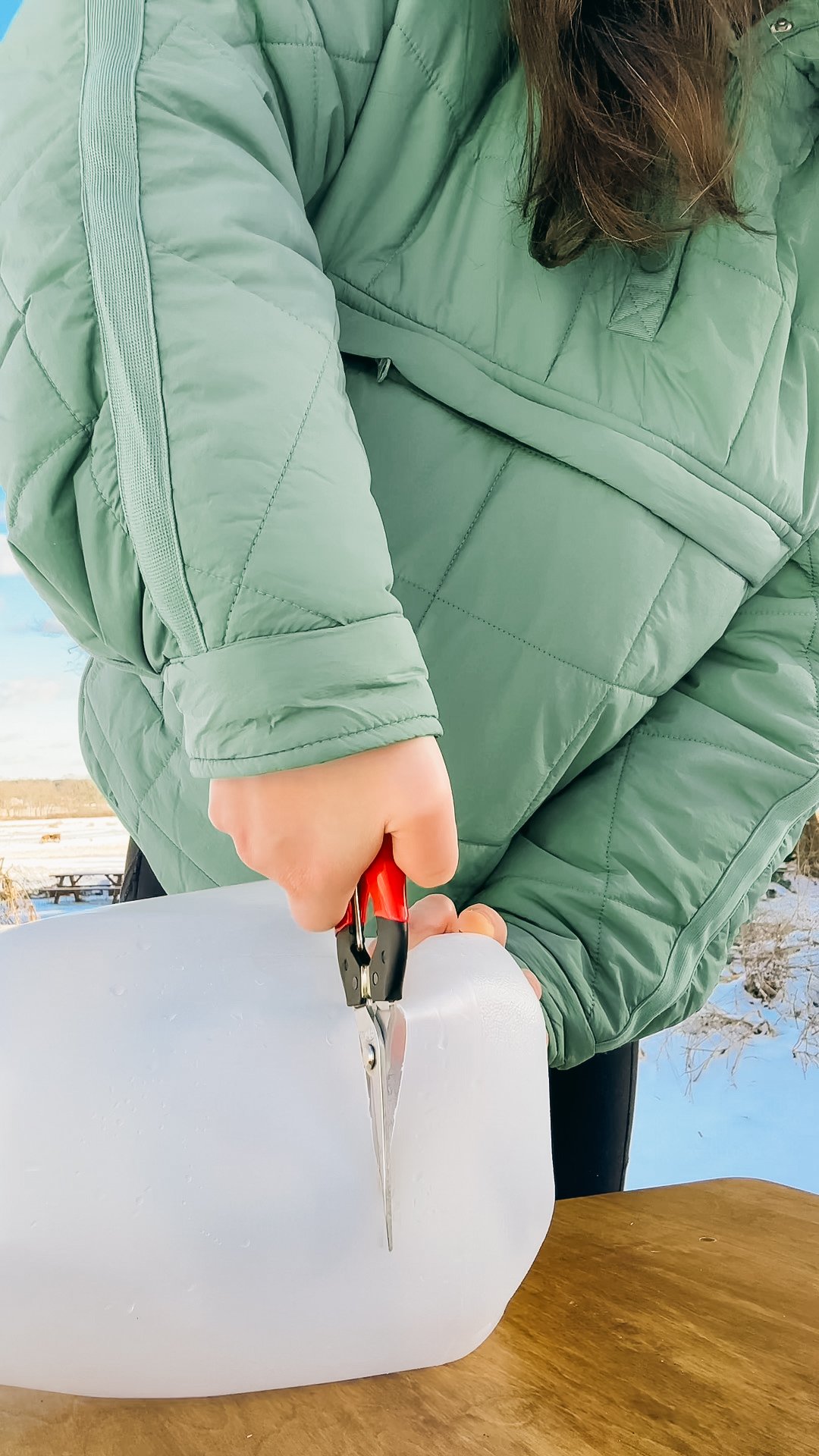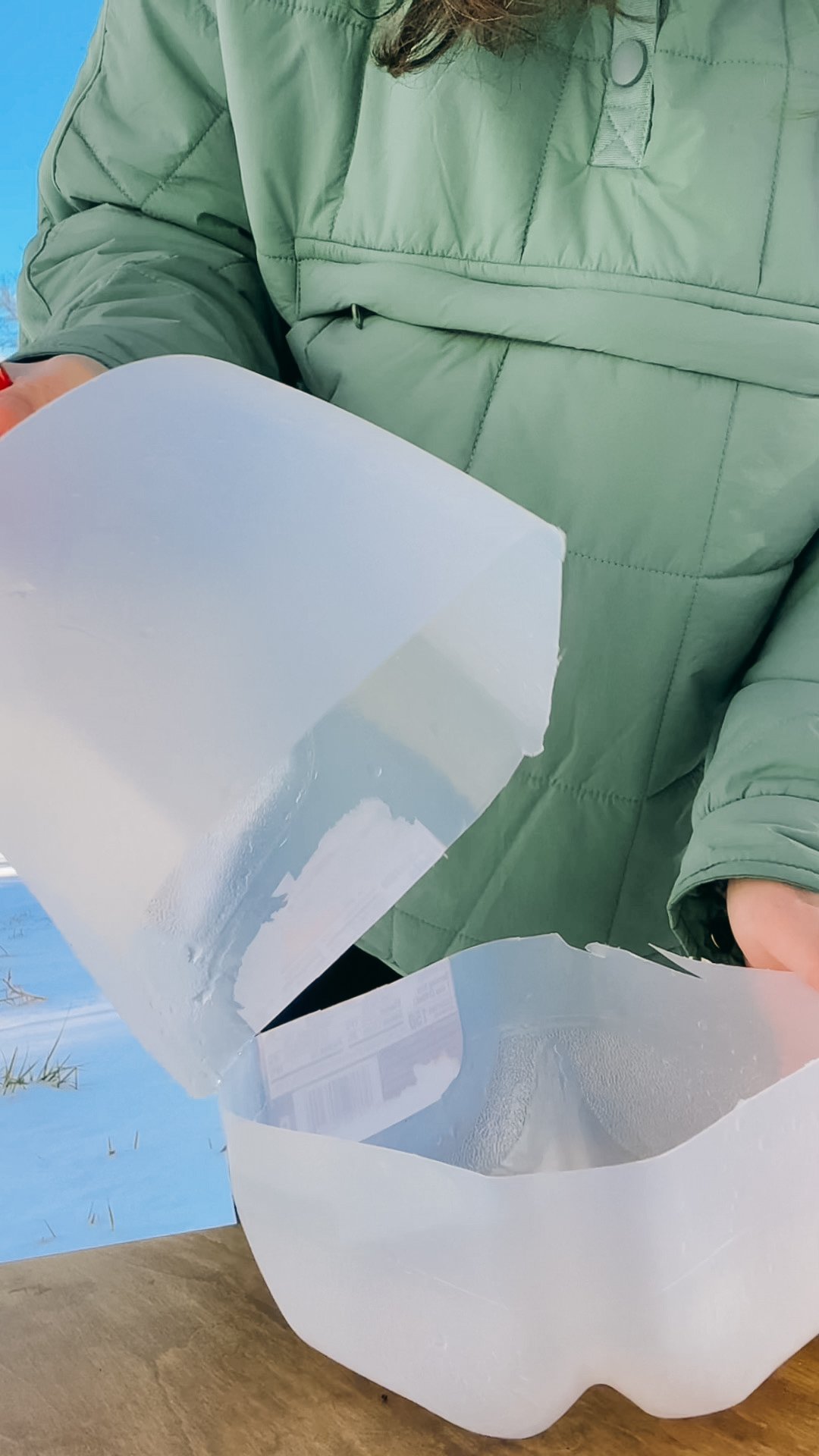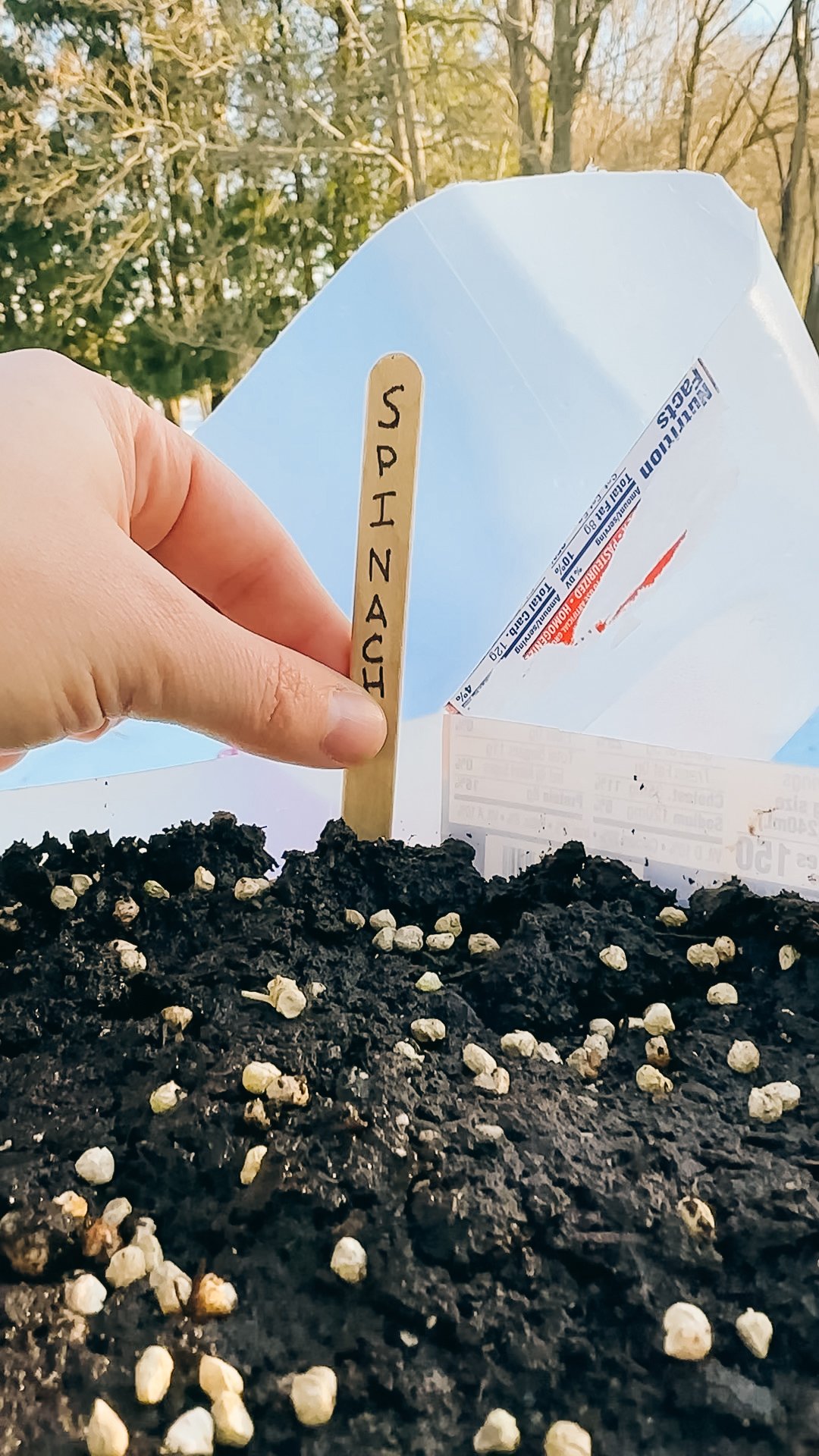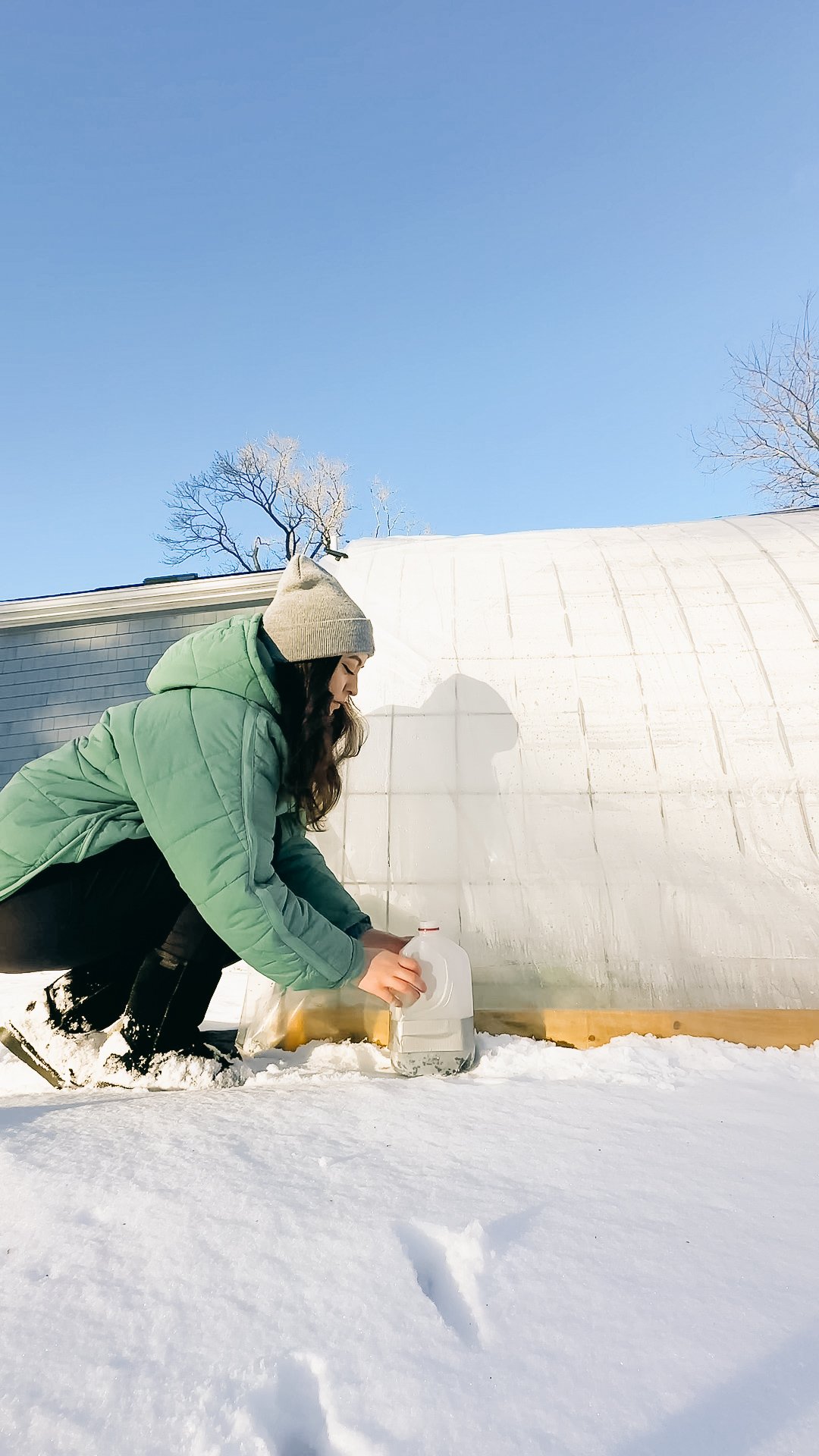Winter Sowing in Milk Jugs - How to Winter Sow Seeds [Tutorial]
You don't need an expensive grow light setup to start seeds for your garden. In fact, all you need is a humble milk jug, some soil, and seeds to kickstart your gardening journey. This simple and cost-effective method, known as winter sowing, allows you to harness the power of nature to germinate seeds and get a head start on your garden. In this blog post, we'll explore the step-by-step process of winter sowing using milk jugs, making it accessible to even the most novice gardeners.
Benefits of Winter Sowing
Wondering what is winter sowing? Winter sowing eliminates the need for expensive grow light setups, making it an incredibly budget-friendly option for seed starting. By using the power of natural sunlight and outdoor conditions, winter sowing mimics the seeds' natural environment, promoting healthier and more robust seedlings. This method allows you to get a head start on your cold-hardy spring crops, giving them a longer growing season and increased chances of success. With just a few basic supplies, you can embark on your gardening journey without the need for complex equipment.
How to winter sow seeds
Materials Needed
Milk jug (or any similar plastic container)
Soil
Seeds
Scissors or utility knife
Duct tape
Popsicle stick or other plant marker you can write on
Permanent marker
Step 1: Prepare Your Milk Jug
Start by collecting empty milk jugs or similar plastic containers. Ensure that they are clean and free of any residue. Milk jugs or water jugs are ideal for this method due to their translucent nature, allowing sunlight to penetrate while providing a protective environment for your seeds.
Poke drainage holes in the base of the jug to prevent waterlogging. Adequate drainage is crucial for seedlings' health, preventing root rot and mold formation.
Step 2: Cut and Create a Hinge
Using scissors or a utility knife, carefully cut the milk jug in half, leaving a hinge along the side where the handle is located. This hinge will act as a connection point, allowing you to open and close the jug easily.
The hinged design serves a dual purpose – it provides easy access for planting and labeling while maintaining a protective cover for your seeds.
Step 3: Add Soil and Plant Seeds
Fill the bottom half of the milk jug with high-quality potting soil. Ensure that the soil is moist but not waterlogged. Plant your seeds according to the recommended depth and spacing for each type. This is also the perfect time to label your seeds inside the jug, preventing any labels from washing away during watering.
Choosing the right seeds is crucial for successful winter sowing. Opt for seeds that can withstand cold temperatures, such as self-seeding annuals and perennial plants suitable for your zone. This method is particularly effective for cold-hardy spring crops.
Step 4: Seal and Protect
After planting your seeds and labeling the jug, close the top half of the milk jug and tape it shut. This creates a mini greenhouse effect, trapping warmth and moisture inside. The tape also ensures that the jug remains securely closed, protecting your seeds from potential disturbances.
Remove the lid from the jug so it can vent properly and rain and snow can enter through the opening to keep the soil damp and place the milk jug in a sunny spot, ideally where it is sheltered from strong winds. This provides the optimal conditions for germination while protecting the seeds from harsh weather elements.
Can I use any type of plastic container for winter sowing, or is a milk jug essential?
While milk jugs are commonly used due to their translucent nature, you can experiment with similar plastic containers. Just ensure they are clean, have drainage holes, and provide some transparency for sunlight to reach the seeds.
How many drainage holes should I add to the base of the milk jug?
Adding 3-4 small drainage holes should be sufficient to prevent waterlogging. This ensures proper drainage while maintaining the necessary moisture for seed germination.
What soil should I use for winter sowing?
Using high-quality potting soil is recommended for optimal seed germination. Choose a mix that provides good aeration and drainage to support healthy root development.
Can I winter sow seeds that require warmer temperatures to germinate?
Winter sowing is best suited for seeds that tolerate cold temperatures. It's ideal for self-seeding annuals and plants that are naturally perennial in your zone. If you have warm-weather crops like tomatoes or peppers, consider other seed-starting methods indoors.
How often should I water the seeds inside the milk jug?
Since the jug is sealed, it retains moisture well, but it's essential to prevent the soil from drying out completely. You shouldn’t need to water your milk jugs unless there’s an unusually dry and warm period. Be cautious not to overwater, as drainage holes help avoid waterlogged conditions.
Can you winter sow tomatoes?
Winter sowing is most effective for cold-hardy plants and early spring crops. While it may work for tomatoes, it's best suited for those that can withstand colder temperatures and benefit from a longer growing season.
Where to place winter sowing containers
Choose a sheltered spot for placing the milk jug, such as near a building or behind a windbreak. If necessary, you can also place heavier objects around the jug to provide additional protection from strong winds.
Can I start winter sowing in any climate zone?
Winter sowing is adaptable to various climate zones. However, its effectiveness may vary depending on your specific climate. Adjust the timing and seed selection based on your local frost dates and weather conditions.
What should I do if mold develops inside the milk jug?
If mold appears, open the jug to increase ventilation, and reduce watering frequency. Ensure the soil surface is dry between waterings, and consider applying a dilute hydrogen peroxide solution to the affected areas to combat mold.
Can I reuse the milk jugs for multiple seasons of winter sowing?
While milk jugs are durable, they may degrade over time due to exposure to sunlight and the elements. It's advisable to inspect them before each season and replace any that show signs of damage or wear. Reusing jugs can be cost-effective, but ensure they are in good condition for successful winter sowing.
When to start winter sowing
You can begin winter sowing any time after the winter solstice (December 21st) because that is when daylight hours begin increasing again.
When should I transplant my winter sown seedlings into the ground?
Transplant your winter sown seedlings after your last frost date. Winter sown seedlings are generally much more cold hardy since they are already adapted and require no hardening off.
Best seeds for winter sowing
Winter Sowing Herbs:
Lavender (Lavandula): Lavender is a hardy herb that thrives in cooler temperatures, making it an excellent candidate for winter sowing. It appreciates well-drained soil and full sunlight.
Chives (Allium schoenoprasum): Chives are cold-tolerant and can be easily grown from seeds in milk jugs. They add a mild onion flavor to dishes and are a great addition to any herb garden.
Parsley (Petroselinum crispum): Parsley is a biennial herb that can withstand cold temperatures. Winter sowing provides an early start for this versatile herb, commonly used in culinary applications.
Winter Sowing Flowers:
Calendula (Calendula officinalis): Calendula, or pot marigold, is a self-seeding annual flower that thrives in cooler weather. Its vibrant orange and yellow blooms add beauty to gardens and can be winter-sown for early spring blossoms.
Sweet Alyssum (Lobularia maritima): Sweet Alyssum is a low-growing flower with a sweet fragrance. It's perfect for borders and containers and can be started in milk jugs for a head start on spring blooms.
Bachelor's Button (Centaurea cyanus): Bachelor's Button, or cornflower, is a cold-tolerant annual with striking blue flowers. Winter sowing allows you to enjoy its blooms earlier in the season.
Winter Sowing Vegetables:
Spinach (Spinacia oleracea): Spinach is a cold-hardy leafy green that does well with winter sowing. You can start spinach seeds in milk jugs to get an early harvest of fresh greens.
Radishes (Raphanus sativus): Radishes are quick-growing vegetables that tolerate cooler temperatures. Winter sowing radish seeds allows you to enjoy their crisp and peppery roots in early spring.
Kale (Brassica oleracea acephala): Kale is a cold-resistant leafy green that benefits from winter sowing. It's rich in nutrients and can be harvested early for delicious and nutritious greens.
Arugula (Eruca sativa): Arugula, with its peppery flavor, is an ideal candidate for winter sowing. This quick-growing green thrives in cooler temperatures, making it a perfect addition to your winter-sown vegetable garden. The young leaves are tender and can be harvested for salads or added to sandwiches, providing a burst of freshness.
Bok Choy (Brassica rapa subsp. chinensis): Bok Choy, a type of Chinese cabbage, is well-suited for winter sowing. Its crisp and mild-flavored stalks and dark green leaves are delicious in stir-fries and salads. Starting Bok Choy seeds in milk jugs allows for an early harvest and a continuous supply throughout the growing season.
Broccoli (Brassica oleracea var. italica): Broccoli, a cold-tolerant vegetable, can be successfully grown from seeds in milk jugs. This nutritious and versatile vegetable benefits from an early start, providing you with homegrown broccoli for soups, salads, and side dishes.
Cabbage (Brassica oleracea var. capitata): Cabbage is a hardy and cold-resistant vegetable that can be started in milk jugs for an early crop. Whether you prefer green or red cabbage, winter sowing allows you to enjoy homegrown cabbage in various culinary creations.
Cauliflower (Brassica oleracea var. botrytis): Cauliflower, with its distinctive white head, is a cool-season crop that responds well to winter sowing. This method gives you a jumpstart on the growing season, ensuring a bountiful harvest of this versatile vegetable.
Endive (Cichorium endivia): Endive, known for its slightly bitter flavor, is an excellent choice for winter sowing. Growing endive from seeds in milk jugs provides you with a crisp and flavorful addition to salads and other dishes.
Leek (Allium ampeloprasum): Leeks, with their mild onion flavor, are cold-resistant and suitable for winter sowing. Starting leek seeds in milk jugs allows for an early harvest of these versatile vegetables, perfect for soups, stews, and as a flavorful addition to many recipes.
Lettuce (Lactuca sativa): Lettuce, a staple in salads, benefits from winter sowing. This method provides an early start for various lettuce varieties, ensuring a continuous harvest of fresh and crispy leaves for your salads and sandwiches.
Swiss Chard (Beta vulgaris subsp. cicla): Swiss Chard, with its colorful stems and nutritious leaves, is well-suited for winter sowing. This versatile green can be started in milk jugs, offering an early supply of homegrown Swiss Chard for cooking and salads.
Remember to check the specific requirements of each seed variety, as some may have preferences for soil conditions, sunlight, and watering. Additionally, consider your local climate and adjust the timing of winter sowing based on frost dates in your area.
Winter sowing in milk jugs is a simple yet effective method for starting seeds, even for those with limited gardening experience or resources. By harnessing the power of nature and utilizing everyday items, you can kickstart your garden without breaking the bank. Give winter sowing in milk jugs a try and watch as your seeds sprout into healthy seedlings, ready to be transplanted into your garden come spring. Happy gardening!

